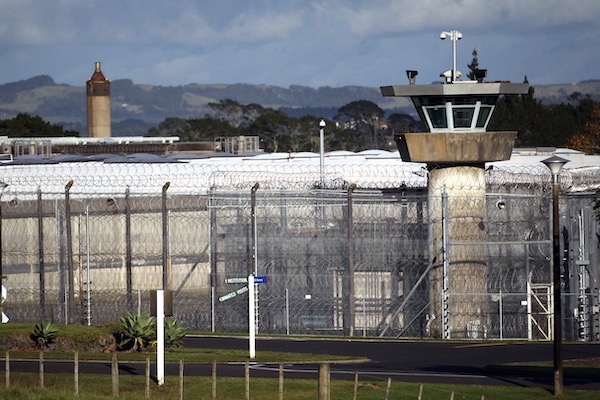Published on the 12/12/2023 | Written by Heather Wright

And Dassault to pay back $1.8m in licence fees to Fujitsu…
Fujitsu New Zealand has been ordered to pay the Department of Corrections $3.9 million for ‘wasted expenditure’ after a court found in favour of the government corrections service provider in a long running dispute over misrepresentation of Dassault software.
The case centres around a contract Corrections inked with Fujitsu in 2018 for a Dassault Systems Australia rostering solution, Quintiq, as part of a ‘Making shifts work’ project to introduce new shift patterns for New Zealand prisons.
“It was Dassault that adopted the strategy of knowingly misleading the Department and Fujitsu.”
Quintiq is supply chain optimisation software which provides real-time management and optimisation of production capacities, raw materials and logistics, along with workforce.
In the Wellington High Court, Justice Cooke ordered Fujitsu to pay $3.9 million to Corrections, after finding the company misrepresented the software. He also upheld Fujitsu’s claim against sub-contractor Dassault under the FTA for $1.8 million in licensing fees, less margins.
Fujitsu, which was already a contractual partner with Corrections, had initially quoted $716,000 to provide the staff rostering software to Corrections in December 2018, with license costs of around $1.8 million, saying Corrections’ rostering requirements could be met ‘out of the box’ by Quintiq, without customisation.
Those assurances were not materially qualified and turned out to be untrue as the standard functionality of Quintiq required extensive work to meet the Department’s requirements, something that would lead to a revised price estimate in May 2019 – just six months after the original costings were provided – which was closer to $7 million in addition to the licence cost.
The increased cost reflected the ‘substantial complexities’ required to meet Corrections’ requirements.
Corrections ended the contractual arrangement after Fujitsu provided the revised price estimate and selected another provider, with that now solution rolled out to a number of Corrections sites.
Corrections’ registrations of interest documents from 2017 noted the department was not looking for a solution that ‘is onerous to the business, places current operations under strain and does not integrate with existing systems’.
“The aim here is for the Department to implement a solution that increases operational efficiency, is flexible, scalable and can be adapted further in future.”
It also required the system to seamlessly integrate with its existing SAP Payroll system, something Fujitsu and Dassault, with whom Fujitsu subcontracted to provide Quintiq, said it could do and which the court documents show provide untrue with SAP integration becoming a major issue, and a major cause of potential cost if the deal had not been aborted.
“Considerable work was required in order to make the two software systems operate together. In part that was due to complexities on the Department’s side, and the way that SAP had been used in the Department’s payroll systems.
“But the fact that complications arose on the Department’s side does not assist Fujitsu. The point of the warranty is that it passed the risk of uncertainty about the complexity of integration to Fujitsu. Fujitsu warranted it would be easy, or seamless. The fact that it was not so establishes a liability whether or not that complexity can be attributed to the Department’s side.”
The court ruling also notes that Dassault realised early on that what was said in the RFP response was inaccurate and that there would likely be a gap between Corrections’ requirements and what could be provided with Quintiq’s standard functionality.
“But it decided not to correct the misrepresentation as it did not want to put the contract, and particularly the significant licence fee that the Department would commit to on entering the contract, at risk,” the court decision notes.
“The misrepresentations in this case originated at Dassault, and it was Dassault that adopted the strategy of knowingly misleading the Department and Fujitsu,” the decision says, noting that Dassault is potentially liable under the CCLA and FTA to Fujitsu because it engaged in ‘misrepresentations and misleading and deceptive conduct’.
“But the contractual terms between Fujitsu and Dassalut protect Dassault from liability. Parties are entitled to contract out of liability under the CCLA and FTA however, and Fujitsu and Dassault did so here.”
However, the documents note that Dassault can’t avoid its liability under the FTA to repay the licence fee charged for Quintiq.
Back in July the Court had also heard that Dassault had deleted emails relating to the
That – unsuccessful – action saw Fujitsu attempting to strike out Dassault’s defence because the internal emails had been deleted. Fujitsu alleged Dassault failed to ensure emails weren’t deleted in accordance with normal business procedures, particularly when staff left Dassault.
Some deleted material, saved on local servers and computers, were recovered, along with some emails from other parties in the email exchanges.
At the time, Justice Cooke said it was likely relevant documents had been destroyed and are not recoverable. But while the breaches were significant and serious, he found there was no deliberate attempt to destroy evidence and that it was not possible for the court to conclude that a fair trial was not possible.
The court decision comes just weeks after a Capterra report highlighted buyer remorse among businesses purchasing software, noting that 58 percent of companies regret at least one software purchase they’ve made in the last 12 to 18 months.
The court documents meanwhile expose some of the challenges involved in software purchases, above and beyond the selection of software.



























